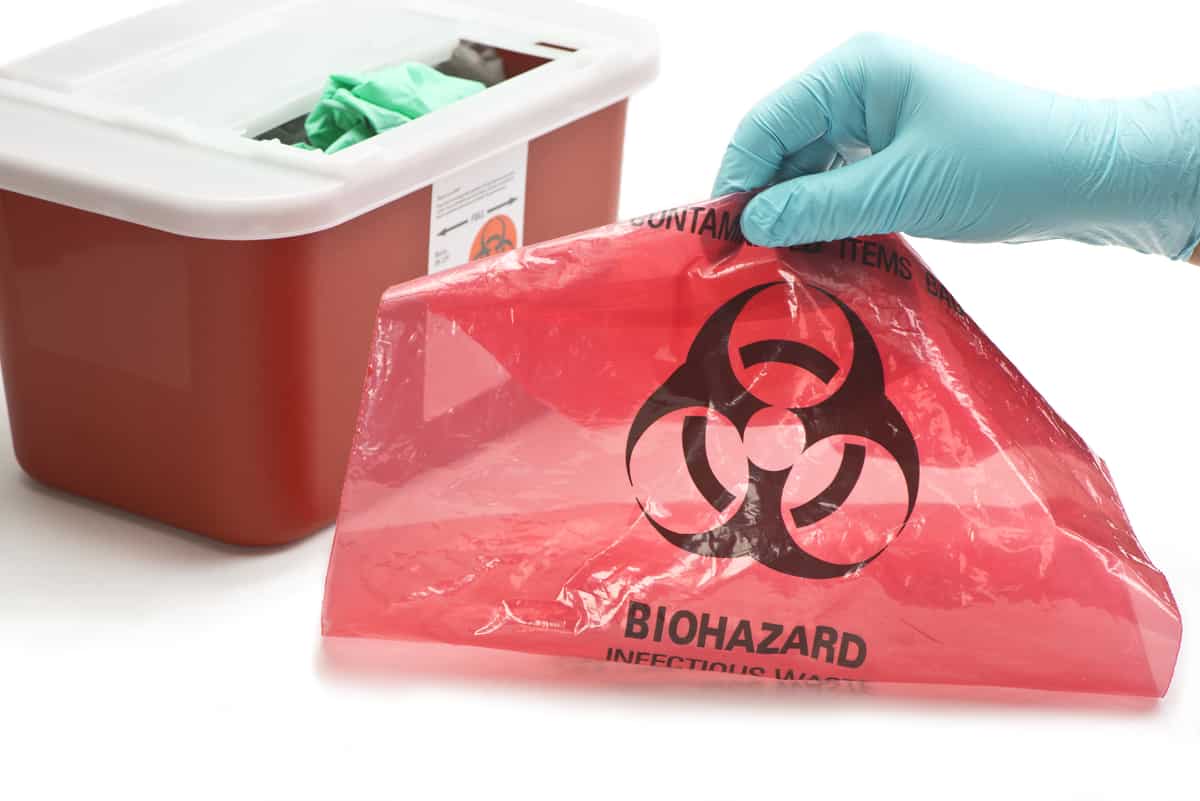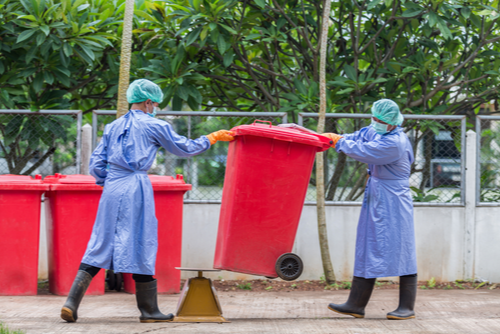Area Care: Seamless and Reliable Medical Waste Removal Near Me
Area Care: Seamless and Reliable Medical Waste Removal Near Me
Blog Article
Keep Ahead of Laws: Specialist Advice on Medical Waste Disposal
In a globe where the medical care sector is regularly progressing, it is necessary for clinical centers to remain in advance of guidelines when it comes to the appropriate disposal of medical waste. From understanding the different groups of clinical waste to applying the ideal collection and partition approaches, this discussion will give valuable understandings and actionable pointers to help facilities remain ahead of laws in the ever-changing landscape of medical waste disposal.
Understanding Medical Waste Categories
Recognizing clinical waste classifications is essential for proper disposal and management in medical care facilities. Clinical waste describes any type of waste generated by health care activities that might posture a threat to public health or the setting. It is important to classify medical waste precisely to ensure its secure handling, transportation, disposal, and treatment.
There are numerous categories of medical waste that healthcare centers require to be familiar with. One of the most common classifications include contagious waste, pathological waste, sharps waste, pharmaceutical waste, and chemical waste. Each category has certain guidelines and policies for its proper monitoring and disposal.
Pathological waste refers to human tissues, body organs, or body parts that require unique handling and disposal. Drug waste makes up run out, extra, or infected medicines that require cautious handling and disposal.
Staying Up-To-Date With Regulatory Modifications
Remaining present with regulative changes is critical for medical care centers to make certain compliance and correct management of medical waste disposal. medical waste removal. With laws continuously developing, it is crucial for medical care centers to stay current to stay clear of fines, penalties, and prospective injury to the environment and public health
To stay in advance of regulatory changes, medical care facilities should establish a system for tracking and monitoring updates. This can be done by signing up for regulative newsletters, participating in workshops and meetings, and proactively participating in market associations. In addition, centers need to assign a personnel member or team liable for remaining educated and sharing details to appropriate stakeholders.
Routine communication with governing firms is also vital. Health care facilities need to establish connections with neighborhood, state, and government agencies to guarantee they recognize any type of modifications in laws that may affect their waste administration techniques. This can be done via routine meetings, participation in public comment periods, and proactive engagement with governing firms.
In addition, healthcare centers must consider partnering with waste monitoring firms that concentrate on clinical garbage disposal (medical waste disposal services with WasteX). These companies are frequently well-versed in the most recent guidelines and can provide guidance and assistance to ensure compliance
Applying Proper Collection and Partition Methods
To properly handle medical garbage disposal, medical care centers have to develop correct collection and partition techniques in accordance with regulatory guidelines. Executing these approaches ensures the secure handling and disposal of possibly dangerous materials, secures the atmosphere, and minimizes the danger of infections and injuries to health care employees and the basic public.
Correct collection and segregation methods include the use of marked containers and classifying systems. Medical care centers need web link to give clearly labeled containers for different kinds of clinical waste, such as sharps, contagious waste, pharmaceutical waste, and view publisher site non-hazardous waste. These containers need to be color-coded and clearly marked to avoid complication and advertise easy identification.
In addition, medical care facilities need to educate their staff on the correct treatments for accumulating and setting apart clinical waste. This includes enlightening them on the various sorts of waste, the appropriate containers to use, and the significance of following policies and standards. Routine training sessions and refresher course courses should be conducted to make certain that team members continue to be updated on best practices.
Furthermore, health care facilities ought to develop a system for normal collection and disposal of clinical waste. This might include partnering with qualified waste monitoring firms that focus on medical waste disposal. These firms will make certain that the accumulated waste is delivered and thrown away in conformity with regulative demands.
Picking the Right Disposal Techniques

Incineration is among one of the most reliable and usual approaches for taking care of certain types of clinical waste, such as pathological waste and sharps. It involves the controlled burning of waste at heats, lowering it to ash. Nevertheless, incineration can launch dangerous toxins into the air and contribute to air pollution.

Chemical therapy involves the use of chemicals to decontaminate and neutralize the waste. Microwave therapy makes use of microwave power to heat and disinfect the waste.
Making Certain Compliance With Documents and Training
After carefully considering the ideal disposal techniques for clinical waste, healthcare facilities have to guarantee conformity with regulations and reduce ecological impact by executing effective documentation and training procedures. This step is critical in preserving a safe and lasting setting for both healthcare workers and the public.
Medical care workers that manage medical waste ought to get appropriate training on waste segregation, handling, and disposal treatments. By providing extensive training, healthcare facilities can equip their personnel to make educated choices and reduce the danger of incorrect waste disposal.
Final Thought
Finally, staying in advance of laws in medical garbage disposal is essential for healthcare facilities. medical waste removal near me. Comprehending the various groups of medical waste, remaining updated with regulative adjustments, applying correct collection and segregation techniques, picking the ideal disposal methods, and making certain conformity with documents and training are all crucial actions. By adhering to these standards, medical care organizations can properly dispose and take care of of medical waste in a liable and safe fashion
From understanding the different categories of clinical waste to applying the appropriate collection and segregation approaches, this conversation will certainly supply workable tips and beneficial insights to aid facilities remain ahead of guidelines in the ever-changing landscape of clinical waste disposal. - medical waste disposal services with WasteX
The most usual categories consist of transmittable waste, pathological waste, sharps waste, pharmaceutical waste, and chemical waste. Healthcare facilities should give plainly labeled containers for various kinds of medical waste, such as sharps, infectious waste, pharmaceutical waste, and non-hazardous waste. Health care centers must develop a detailed system to tape-record and track all aspects of medical waste disposal, consisting of kinds of waste generated, quantities, and disposal methods utilized. Healthcare workers that manage clinical waste should receive proper training on waste partition, handling, and disposal treatments.
Report this page